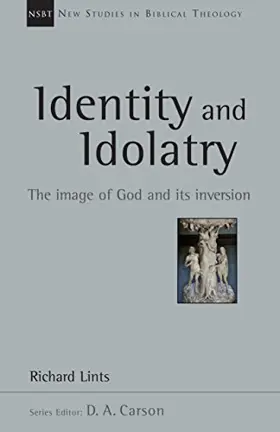

Identity and Idolatry: The Image of God and Its Inversion
in New Studies in Biblical Theology
Pages
208
Publisher
IVP Academic
Published
7/17/2015
ISBN-13
9780830826360
"So God created man in his own image, in the image of God he created him; male and female he created them." (Genesis 1:27)
Genesis 1:26-27 has served as the locus of most theological anthropologies in the central Christian tradition. However, Richard Lints observes that too rarely have these verses been understood as conceptually interwoven with the whole of the prologue materials of Genesis 1. The construction of the cosmic temple strongly hints that the "image of God" language serves liturgical functions.
Lints argues that "idol" language in the Bible is a conceptual inversion of the "image" language of Genesis 1. These constructs illuminate each other, and clarify the canon’s central anthropological concerns. The question of human identity is distinct, though not separate, from the question of human nature; the latter has far too frequently been read into the biblical use of ‘image’.
Lints shows how the "narrative" of human identity runs from creation (imago Dei) to fall (the golden calf/idol, Exodus 32) to redemption (Christ as perfect image, Colossians 1:15-20). The biblical-theological use of image/idol is a thread through the canon that highlights the movements of redemptive history.
In the concluding chapters of this New Studies in Biblical Theology volume, Lints interprets the use of idolatry as it emerges in the secular prophets of the nineteenth century, and examines the recent renaissance of interest in idolatry with its conceptual power to explain the "culture of desire."
Addressing key issues in biblical theology, the works comprising New Studies in Biblical Theology are creative attempts to help Christians better understand their Bibles. The NSBT series is edited by D. A. Carson, aiming to simultaneously instruct and to edify, to interact with current scholarship and to point the way ahead.
Genesis 1:26-27 has served as the locus of most theological anthropologies in the central Christian tradition. However, Richard Lints observes that too rarely have these verses been understood as conceptually interwoven with the whole of the prologue materials of Genesis 1. The construction of the cosmic temple strongly hints that the "image of God" language serves liturgical functions.
Lints argues that "idol" language in the Bible is a conceptual inversion of the "image" language of Genesis 1. These constructs illuminate each other, and clarify the canon’s central anthropological concerns. The question of human identity is distinct, though not separate, from the question of human nature; the latter has far too frequently been read into the biblical use of ‘image’.
Lints shows how the "narrative" of human identity runs from creation (imago Dei) to fall (the golden calf/idol, Exodus 32) to redemption (Christ as perfect image, Colossians 1:15-20). The biblical-theological use of image/idol is a thread through the canon that highlights the movements of redemptive history.
In the concluding chapters of this New Studies in Biblical Theology volume, Lints interprets the use of idolatry as it emerges in the secular prophets of the nineteenth century, and examines the recent renaissance of interest in idolatry with its conceptual power to explain the "culture of desire."
Addressing key issues in biblical theology, the works comprising New Studies in Biblical Theology are creative attempts to help Christians better understand their Bibles. The NSBT series is edited by D. A. Carson, aiming to simultaneously instruct and to edify, to interact with current scholarship and to point the way ahead.
- Table Of Contents
- Series Preface
- Author’s Preface
- Abbreviations
- 1. Living inside the text: canon and creation
- 2. A strange bridge: connecting the image and the idol
- Getting started on the wrong foot: creation and image
- Human identity and human nature
- 3. The liturgy of creation in the cosmic temple
- The first stable as prologue
- The liturgy of creation
- The house that God built
- 4. The image of God on the temple walls
- Introduction
- Image and original
- Signs of reflection
- A reflected relationship
- The first table background: kings and representatives
- After the first table: sonship and sacredness
- Prelude to idolatry
- 5. Turning the imago dei upside down: idolatry and the prophetic stance
- After creation—whence is the image?
- Divine fidelity and the image
- The Decalogue and the diatribe against idolatry
- The golden calf—the ‘great sin’ of idolatry
- Covenantal identity and idolatry across the Old Testament
- Idolatry and adultery
- 6. Inverting the inversion: idols and the perfect image
- Turning the story upside down
- Setting the context
- Idolatry and the Gentile mission
- Theologies of idols: Romans 1 and 1 Corinthians 10
- Narratives of idolatry: Acts 7 and 17
- The perfect image
- Being in the image of the image
- 7. The rise of suspicion: the religious criticism of religion
- Idolatry as ideological criticism: the stage is set
- Idolatry as psychological projection
- Idolatry as alienation and oppression
- Idolatry and the origin of religion
- Friedrich Nietzsche (1844–1900)
- 8. Significance and security in a new key
- The crisis of identity and the idolatries of consumption
- Christian identity and plastic narratives
- An eternal story told across time
- Bibliography
- Index of authors
- Index of Scripture references